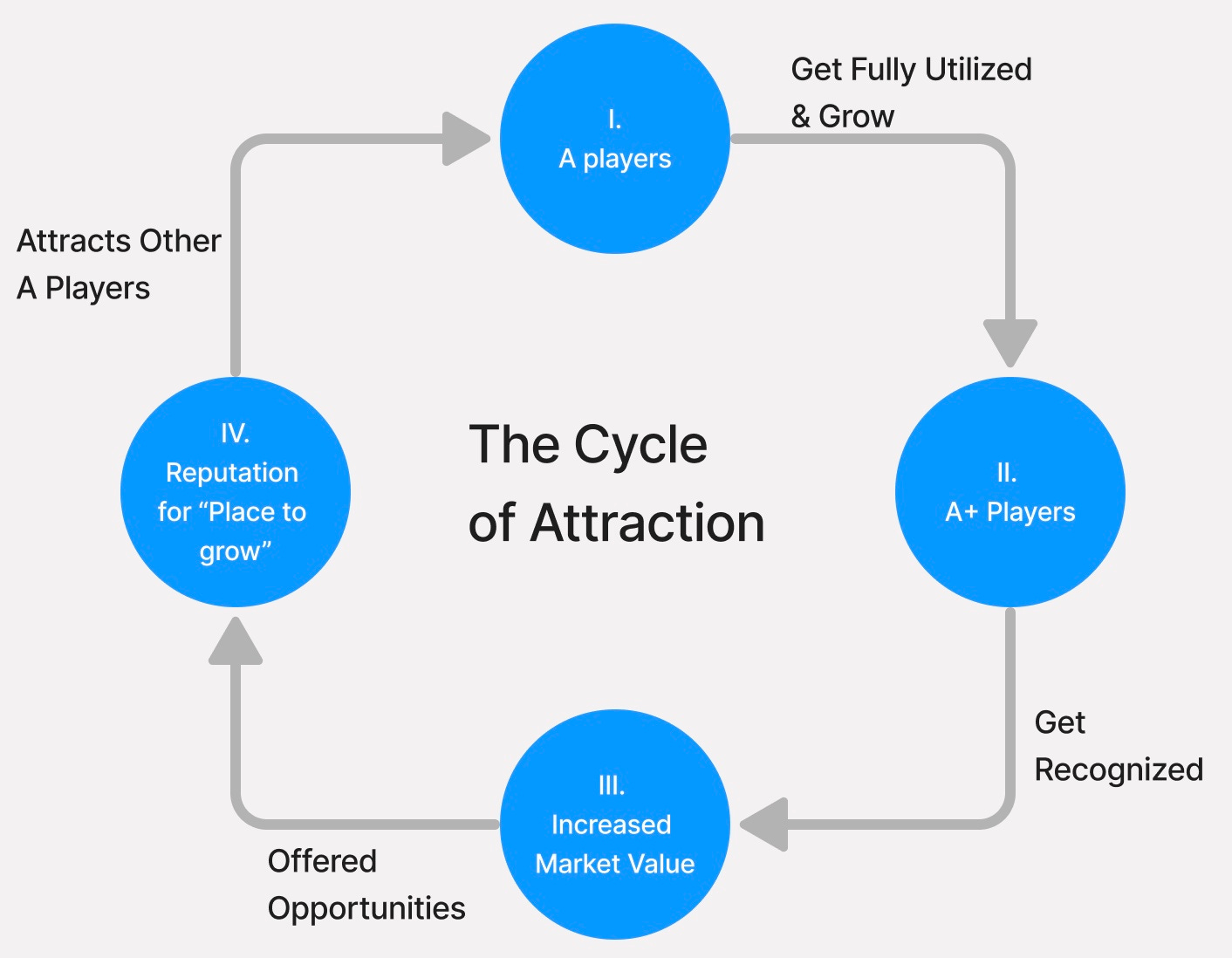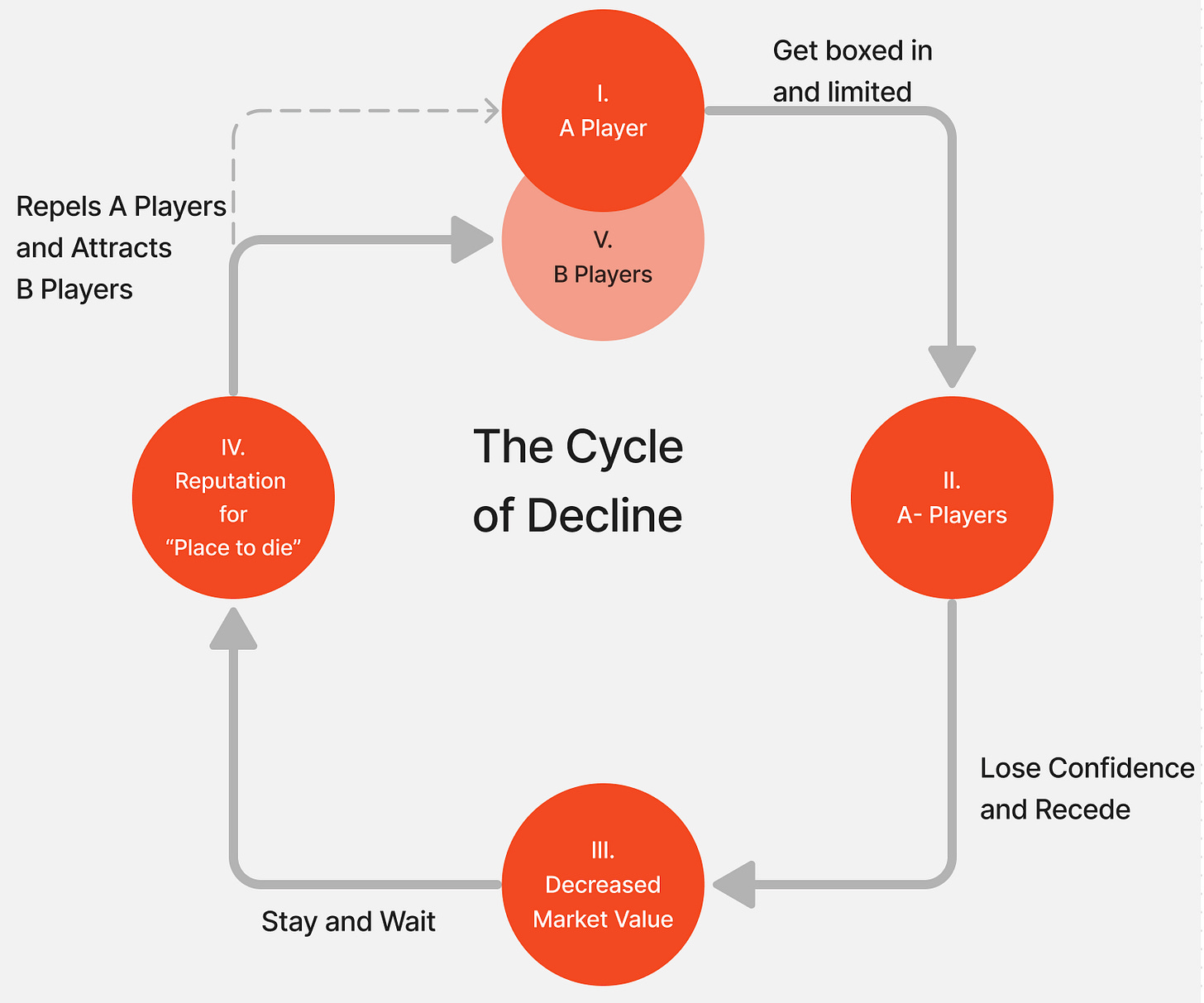Building the team you want with the Multiplier Mindset
How to become a Talent Magnet and ensure you don't become an Empire Builder
There are times when you find yourself unable to get things done. You are blocked by a lack of knowledge, a lack of direction and a team around you that might not be proactive in marching towards the direction that you clearly see. When I’ve found myself in that situation in the past, reaching for my talent magnet toolkit has produced some outstanding results.
Welcome back to part two of the Multipliers framework, “Multipliers: How the Best Leaders Make Everyone Smarter" by Liz Wiseman, and how it can help you build up your team to maximize everyone and stay away from diminishing your team or those you work with closer.
Let’s start by digging into the traits shown by Talent Magnets, those that bring in and search for talent inside and outside an organization while giving them the room to do their best work, and Empire Builders, who hoard resources to create their own power center.
Talent Magnet
A Talent Magnet is a type of leader who has a unique ability to attract and maximize the intelligence and capabilities of the people around them. They create an environment where talented individuals are drawn to work with them and are inspired to contribute their best efforts. There are four key traits that Talent Magnets portray.
1. Look for talent everywhere
Attracts Top Talent: Talent Magnets have a reputation for creating exceptional teams. They possess a compelling vision and are able to effectively communicate it which attract talented individuals who want to be part of something meaningful and impactful. Their ability to articulate a clear direction and create an engaging work environment makes them a magnet for top talent.
Recognizes and Utilizes Intelligence: Talent Magnets possess a deep appreciation for the intelligence and expertise of their team members. They actively seek out diverse perspectives and value the contributions of each individual. They leverage the unique strengths of their team members, assigning them challenging and meaningful work that aligns with their abilities and interests.
2. Find the Native the Genius
How to find it: A native genius is something that a person is the best at and they do it better than everyone else around them. It is also something they do willingly without being paid to do it.
Look for what is native by answering the following questions:
What do they do better than anything else they do?
What do they do better than the people around them?
What do they do without effort?
What do they do without being asked?
What do they do readily without being paid? (read this as things outside of their normal job description)
Label it! Once you’ve answered the above questions and found a person’s native genius, add a good label to it so that it has some meaning and can be understood more easily by the person whose genius you found.
Let’s use me as an example (coming from past managers and my wife):
What do I do better than anything else I do?
I have the ability to see the details and big picture in a very broad way which allows me to push for new ideas and the optimal outcome, while also focusing on the current place where the team is.
What do I do better than the people around me?
Have an in depth understanding of multiple complex projects and work streams all at the same time.
What do I do without effort? and without being asked? Out of the scope of my job description?
Optimizing the best way forward based on the above and creating ideal systems to support it. Pushing for positive change.
Label: The Catalyst
3. Utilize people to their fullest
Invests in People: Talent Magnets invest in the development of their team members. They provide opportunities for growth, offer challenging assignments, and provide ongoing coaching and feedback. They actively support the professional and personal development of their team members, enabling them to continuously learn and acquire new skills.
Amplifies Others' Intelligence: Talent Magnets have the ability to amplify the intelligence and capabilities of their team members. They act as coaches and mentors, helping individuals stretch beyond their perceived limits and in developing new skills. They provide guidance, ask thought-provoking questions, and create an environment that sparks creativity and collaboration.
Provides Autonomy and Ownership: Talent Magnets trust their team members and provide them with autonomy and ownership over their work. They delegate responsibilities, granting individuals the freedom to make decisions and take ownership of their outcomes. This sense of ownership instills a strong sense of accountability and motivates team members to perform at their best.
4. Remove the blockers
Creates a Safe and Empowering Environment: Talent Magnets foster a culture of psychological safety where team members feel encouraged to take risks, share ideas, and challenge the status quo without the fear of negative repercussions. They create an environment that supports learning, growth, and innovation, empowering their team members to reach their full potential.
Get out of the way: A lot of times you as a manager or leader can be a blocker for a teammate as they level up and start to build out new skills. In order for them to have the ownership they need to build it, you as a manager need to step back and let them own it.
Remove the prima donnas: Prima donnas are individuals with exceptional talent but often exhibit negative behaviors that disrupt team dynamics. By removing them from the team, you give everyone else the space to do their best work.
How do you know you’ve made it to the rarified air of a talent magnet?
You’ve made it once you start “Supersizing it”, Naming the genius and letting the superstars go. “Supersizing it”, means you are giving them the right stretch tasks that enable them to be challenged and get to their next level. You are adept at naming the genius of everyone on your team and then pulling them in to work that helps accent their native genius.
Lastly, when someone on your team has grown to a place where they are ready for a new challenge and role, let go of that superstar and help them find their next landing spot! It sounds a little counterintuitive to let your best talent go, but in the long run it’s about your people and the culture you are building. The name recognition you and your company will get from your team being outstanding will more than replace them.
This framework will help you build towards a growth culture and attract the A players to your team:
Empire Builder
In contrast, an Empire Builder is a type of leader who tends to focus on accumulating power, resources, and control for themselves, rather than maximizing the intelligence and capabilities of their team. Empire Builder’s, like Talent Magnets, attract top talent and in contrast often exhibit behaviors that diminish the overall effectiveness of the organization and the people within it. Here are the key characteristics of an Empire Builder:
Hoards Resources and Control: Empire Builders are inclined to amass resources and decision-making authority, consolidating power within themselves. They are reluctant to delegate responsibilities or share information, creating a culture of dependency and limiting the autonomy of their team members. They prioritize their own control and status over the growth and development of others.
Micromanages and Underutilizes Talent: Empire Builders tend to micromanage their team members, closely monitoring their work and limiting their opportunities to contribute fully. They do not leverage the intelligence and expertise of their team, often making decisions unilaterally and disregarding the ideas and perspectives of others. This behavior stifles creativity and innovation within the organization.
Creates a Competitive Environment: Empire Builders foster a competitive environment where individuals vie for limited resources and recognition. They encourage a win-lose mindset, pitting team members against each other rather than fostering collaboration and cooperation. This divisive atmosphere diminishes the collective intelligence and erodes trust within the team.
Creates a Culture of Fear: Empire Builders rely on fear and intimidation to maintain control and compliance within their organization. They use their authority to instill a sense of fear, suppressing dissenting opinions and discouraging risk-taking. This fear-based culture stifles creativity, inhibits open communication, and erodes morale.
Takes Credit for Others' Work: Empire Builders have a tendency to take credit for the accomplishments and ideas of their team members. They seek personal recognition and visibility, often failing to acknowledge and appreciate the contributions of their team. This behavior undermines trust and demotivates individuals, leading to disengagement and reduced work performance.
Creates Silos and Dependencies: Empire Builders promote siloed thinking and dependencies within the organization. They discourage cross-functional collaboration and create barriers to information sharing. This isolation hampers the ability of the organization to leverage the collective intelligence of its members and limits the overall effectiveness and adaptability of the team.
All of this leads up to a toxic environment and losing out on top talent, leading to A players staying away:
The Learning
A players are out there on your team and within your organization. For you as a leader to achieve your goals, you can use the skills above to maximize your people and get the best out of your team. Use the Talent Magnet tools and create a power house team or organization that everyone wants to come to. Lastly, in a counterintuitive way, it’s great to let superstar employees go and grow, don’t be afraid of it, because it will bring long term benefits if you and your team are known as a great place to learn and work from.
Here are a few exercises to try to help bring out the inner Talent Magnet in you:
Exercise #1: Name the Genius
Above in this article I discussed how you can name the genius and how you should work on identifying each person’s “genius” on the team.
As a team building exercise, here is something you can do to get some help from the team in identifying everyone’s native genius (adapted from Multipliers):
Goal: Build up the team through everyone identifying their genius
Time: ~60-90 minutes (For groups of 10 or less)
Exercise:
Define the concept of native genius and talk up how it helps the team.
Pause for questions after to make sure everyone understands the concept.
Have each person on the team, take 10-15 minutes to write up what they think the native genius of each person on the team is.
On a whiteboard or projected from a laptop to a large screen, write up each person’s name and label their genius. Work towards a consensus of that one thing they do better than everyone else and do so naturally.
Ask the team members to give their perspective too.
Break out into groups of 2-3 and have people brainstorm how to use their genius and have them send what they come up with to you.
Exercise #2: Build the Coalition
For this exercise, you will need to do some brainstorming.
Goal: Build a cross departmental team of talent to help get an underperforming project back on track
Timing: ~45 minutes to plan
Take a pad of paper or pull up a document on your screen and write out a list of underperforming projects or work streams.
Next write out all the cross team dependencies for how the work gets done and teams that the work impacts.
From those teams, ask yourself the question, “Do I know any superstars that can help out with this project/work stream to help achieve success?”
Write out that list and then what you think they could help with
Build on your current project a plan on how those people can help in the project and the approximate time you would need from them.
Lastly, write up a pitch to those people on why they need to be involved in the project and what they will bring that will supercharge the effort
Reach out and create the cross functional team!
Exercise #3: Stay Curious
Do you have any amorphous, under developed or undefined ideas? If so, this exercise is for you!
Goal: Find out some creative ideas to solve a problem from places you wouldn’t normally get
Timing: A couple days to a week.
Identify a problem to be solved and frame it as a question.
Find and poll a large cross section of your team, your company, your friends or your connections on how they would solve that problem.
Compare their answers to where you’ve got to.
For any specific answers that blow you away, dig in and start asking more specific questions on how they would implement that answer/and or solution.
Write it all up and send it over for your team to review, build a plan around it and execute!




